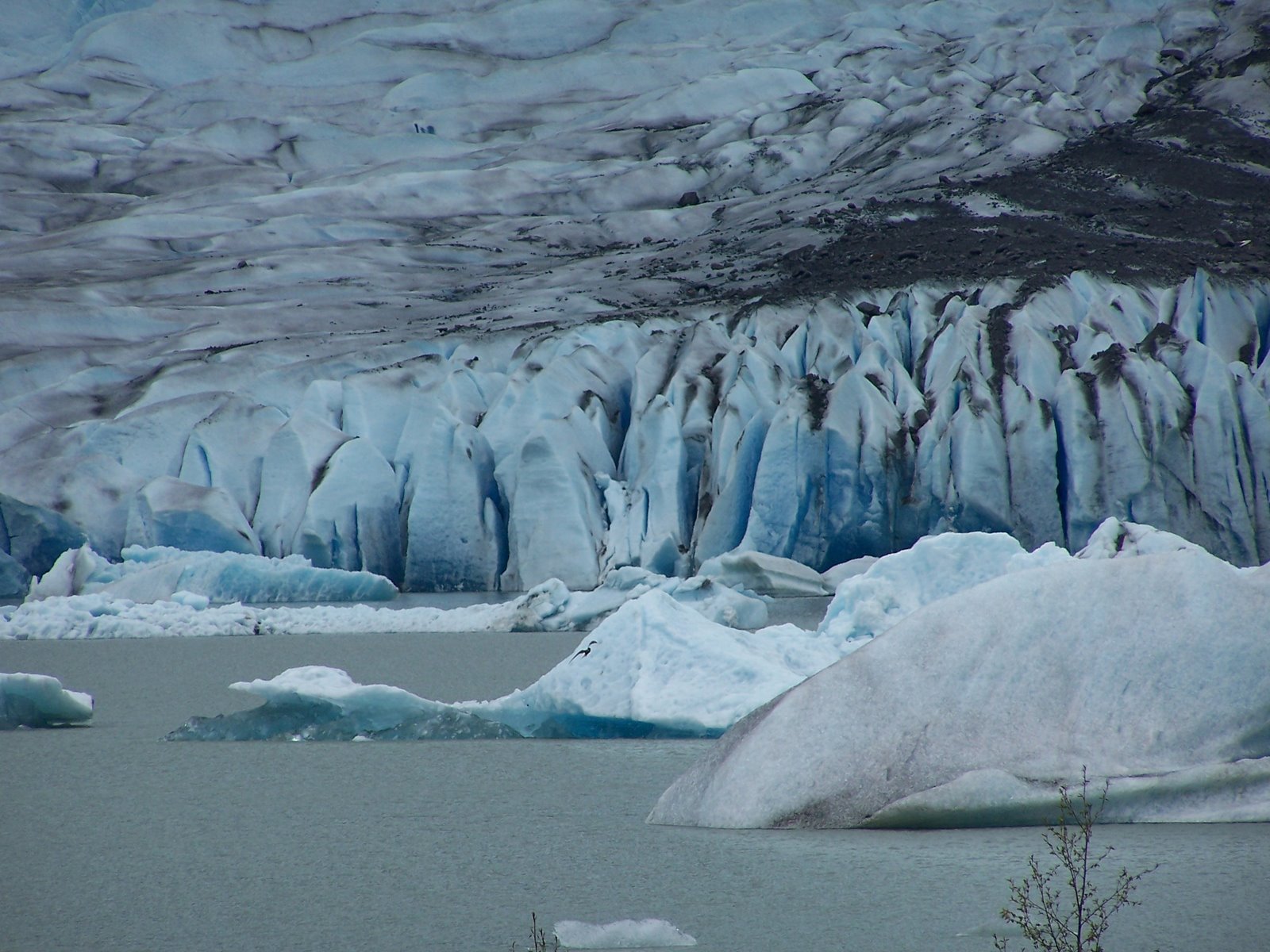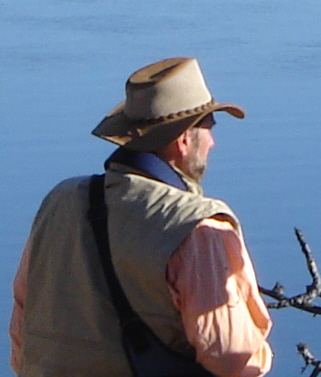We almost didn't make the flight from Johannesburg to Maun. I pronounce Maun as one syllable but the locals pronounce it "Mau oon". Half awake and a bit out of our element it took a while to understand that "Mua oon" was Maun, especially since they did not bother to change the name of the destination at the boarding gate from Johannesburg to Maun. On the transport bus to the plane we were talking to a lady from New York. This was her third trip to Africa. Last year she took a Safari by horse back. Sounded like it could be fun, but it turns out elephants and horses don't mix. A bull elephant charged the group, the horses began uncontrollably running, as the only guide with the rifle fell off of his mount. The elephant continued his pursuit of a newly wed couple for half mile before he gave up the chase. I can just hear the conversation between these two once they stopped trembling. " Africa!" she would say. " I wanted to go to the Mediterranean but NO, you had to come to Africa. I'M CALLING MY MOTHER".
When we reached Maun I was anxious to get the real adventure underway and was very impressed to meet our guide from CC Africa Safari Tours. Seilaneng, "See" for short, was a native of Botswana, what he described as a river bushman which was different than being a bushman from the central Kalahari. As a child he lived in the traditional grass hut structure and lived off the land and water. His grandfather from whom he learned his tracking skills was one of the first wildlife reserve rangers in the Okavango Delta.
( http://www.mindspring.com/~okavango/ )
Our bush plane pilot lifted us off the runway in less than 30 seconds. I could see my son-in-law's face change to quiet desperation as the plane took a quick bank to the right. With seats for only eight passengers every bump in a cloud was felt down our spines. Before we boarded the plane we noticed the paint job of the plane must have been done with spray cans and a few bottles of beer. At least the wings didn't fall off. The duct tape held!
The landing at the Okavango air field was surprisingly smooth given it was only mud and grass with a four foot by six foot wooden "bus" stop as a terminal. A minute or two after landing the Toyota Land Cruisers approached. We were placed in one and our baggage in the other. As we drove to the camp site we were met by Vervet monkeys and Impala. This area of the Kalahari desert is not anything that you would expect. There are large water ways and lush vegetation. The thick jungle areas show signs of elephant destruction with trees toppled and defoliated. Animal droppings are everywhere on the trail. Also, animal tracks. Our guide See points some out as we go. " Lion tracks, male about an hour old" said See. Yea, right I'm thinking he can tell this as we are driving on this bumpy mud road at 20 mile per hour. That evening I was to become a true believer in his ability as a tracker.
This particular camp site is a permanent camp. The tents are spaced about 50-75 feet apart with an outdoor dining area in the center. A 15 foot high castle like termite mound is it's center post. We are at the waters edge with a large marsh visible for miles. Having given us an hour or so information on what to expect over the next several days in the Delta we are off for a late afternoon game drive. As soon as the sun goes down the temperature drops. The open land cruiser is great for viewing but is very cold. As we drive we see more Vervet monkeys and Baboons. Several giraffe's heads and long necks peak from behind some trees. See stops for an few seconds and says there are seve
 ral lions that have just passed across this road. He takes a quick right stops again to check out the tracks . "Two males and several females" he says. We are off again and in less than a minute we spot the first young male lion. Then the second walks across the mud road with just a mild interest in us. Three female lions were at the head of an open filed. They each took a position about 20 feet apart and began walking . The two males walked along the mud road to the left. Not a sound from any. What luck to see these five lions hunting on our first day. One of my son-in-laws was hoping to see a kill but it is getting late and buy park regulations we were all ready to be back at camp. See turns the land cruiser around and we are back at camp in about 15 minutes, happy to be standing around a warm camp fire.
ral lions that have just passed across this road. He takes a quick right stops again to check out the tracks . "Two males and several females" he says. We are off again and in less than a minute we spot the first young male lion. Then the second walks across the mud road with just a mild interest in us. Three female lions were at the head of an open filed. They each took a position about 20 feet apart and began walking . The two males walked along the mud road to the left. Not a sound from any. What luck to see these five lions hunting on our first day. One of my son-in-laws was hoping to see a kill but it is getting late and buy park regulations we were all ready to be back at camp. See turns the land cruiser around and we are back at camp in about 15 minutes, happy to be standing around a warm camp fire.I was not quit sleeping when there was a large boom out side. Hyenas turned over the dinning table as they were looking for food. They would visit just about every night at each of our camp sites. Before the intrusion I was being lolled to sleep by chirping white bell frogs that sounded as if they were hopping on xylophones. Then a leopard roars. Did I make the best choice of accommodations? Only thin canvas between me and what ever is out there.
We are awake very early. The "bush alarm" begins before dawn. Vervet monkeys start their howling then the baboons bark out orders for the day. An occasional elephant trumpets.
A large breakfast ( I will mention more of the food later) around the camp fire then we are off for the morning boating. Before we reach our destination our land cruiser gets stuck in the mud. See calls for help on the radio and help arrives quicker than AAA. Our mekoros
( dug out canoe) polers are waiting for us . Five boats in the water and one mekoro on shore with a large gaping hole from a hippos foot. Each poler stands at the back of the boat and pushes us along in the shallow water. This area
of the Okavango is a flood plane. Small islands of palms and birds dot the still water with areas of papyrus growing at the waters edge. Now and again a trail was sliced through the papyrus by crocodile. Luckily not many crocs are around since we are only inches from the water line and I need my hands. Eagles, grey heron, Egyptian geese, and large numbers of shrikes, egrets, jacanas, hornbills and cranes are everywhere.
Back at camp and it is getting down right hot by mid-day. Even the moneys are taking a siesta.
Continued .... African Safari/Moremi Wildlife Reserve post



